The sample provided in the question cannot work at all (missing coma and spec is not a SwaggerUI property).
To show your swagger.json file which is in the same folder as index.html you just need to replace url = "http://petstore.swagger.io/v2/swagger.json" by url = "swagger.json"; in index.html.
Original index.html
var url = window.location.search.match(/url=([^&]+)/);
if (url && url.length > 1) {
url = decodeURIComponent(url[1]);
} else {
url = "http://petstore.swagger.io/v2/swagger.json";
}
[...]
window.swaggerUi = new SwaggerUi({
url: url,
dom_id: "swagger-ui-container",
supportedSubmitMethods: ['get', 'post', 'put', 'delete', 'patch'],
onComplete: function(swaggerApi, swaggerUi){
if(typeof initOAuth == "function") {
initOAuth({
clientId: "your-client-id",
clientSecret: "your-client-secret-if-required",
realm: "your-realms",
appName: "your-app-name",
scopeSeparator: ",",
additionalQueryStringParams: {}
});
}
Modified:
var url = window.location.search.match(/url=([^&]+)/);
if (url && url.length > 1) {
url = decodeURIComponent(url[1]);
} else {
url = "swagger.json";
}
[...]
window.swaggerUi = new SwaggerUi({
url: url,
dom_id: "swagger-ui-container",
supportedSubmitMethods: ['get', 'post', 'put', 'delete', 'patch'],
onComplete: function(swaggerApi, swaggerUi){
if(typeof initOAuth == "function") {
initOAuth({
clientId: "your-client-id",
clientSecret: "your-client-secret-if-required",
realm: "your-realms",
appName: "your-app-name",
scopeSeparator: ",",
additionalQueryStringParams: {}
});
}
